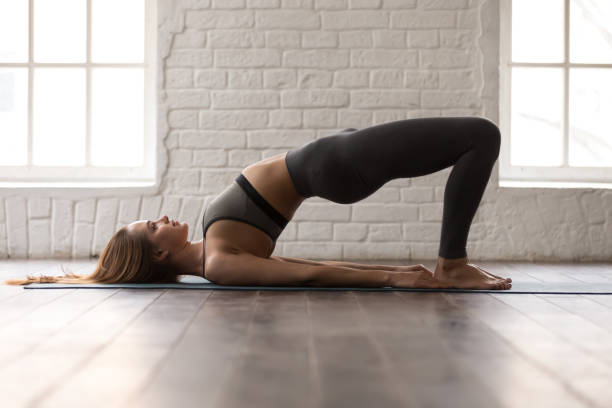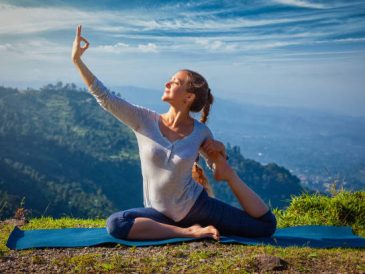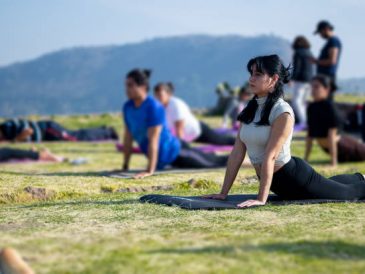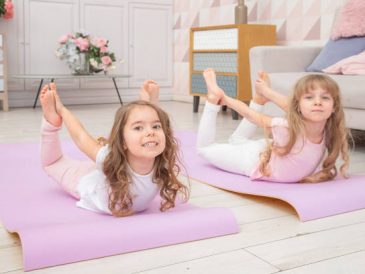It is important to take care of your joints and bones at all stages of your life. This includes building strong bones in childhood and ensuring mobile and strong joints as you age. As well as maintaining good bone density and joint health through the later years.
You’ll know what nutrients are needed to maintain healthy bones, joints, and connective tissues if you have ever suffered from joint pain or broken bones.
Yoga has many benefits for your joints and bones. There are many postures that can be used to support weight and rotate joints. You can also relax your nervous system and have a positive impact on pain levels.
Continue reading to learn more about the health of your joints and bones, including specific yoga exercises and joint mobility exercises.
Take care of our bones
Young bones
Our ‘bone-building years” are our childhood and teenage years. The skeleton is made of both bone as well as cartilage. This softer, elastic cartilage is found around the joints, hips, and ribcage. It allows the body to grow and change shape.
Children are more flexible because they have lots of cartilage in their bodies. They also tend to heal faster from injuries due to the constant building of bone.
At 16 years old, most of the cartilage is transformed into bone. By about age 25, bones are considered to be fully hardened through an process called ‘ossification’.
Children should be able to move freely and frequently as they grow in order to build strong bones. Simple actions such as walking, jumping, crawling and lifting heavy objects can help bone growth. Research shows that children are more likely to have weaker bones than they used to. This could be due to a lack in movement, vitamin D deficiency, poor diet, and lack of sunlight. Richard Louv’s “nature deficit disorder” is a condition that has a negative impact on children’s mental and physical health. It is important that children are allowed to be children and allow them to move and hurt themselves occasionally. This will help build strong bones and prevent fractures.
Adult Bones
Peak bone density is believed to occur in our 20s. As we age, it becomes more important to focus on bone health. Stress, excessive sedentary living, indoor living, and a diet high in processed foods can all lead to poor joint and bone health.
It is important to do weight-bearing exercises, to eat enough calcium and vitamin D, as well as to spend time outside, since vitamin D from the sun can play an important role in how much we absorb from food.
While we are focusing on food, it is important to also consider our gut health. You can eat organic, healthy foods, but your gut may not be able to absorb them due to issues such as colitis, leaky gut or IBS. You should also choose bone-building foods, which you can find below. Also, make sure to get good quality probiotics. These include yoghurt and sauerkraut as well as miso and prebiotics from leeks, onions, bananas and almonds.
Aging Bones
It is possible for bone density to decline as we age. While we shouldn’t be afraid of having weak bones in our later years, it is important to pay attention to bone health at this stage.
Women who are post-menopausal are more likely to have lower bone density or osteoporosis. This is due to declining hormone levels like oestrogen. However, there are many natural ways to maintain bone health and prevent osteoporosis.
Low bone density is a sign of osteoporosis, which increases the risk of hip and spine fractures. Low hormone levels are linked to a diet high in acidic foods like sugar and long-term excessive intake of fizzy drinks and alcohol. Also, smoking and steroids can cause eczema and IBS.
Natural approaches like diet, exercise, sunlight and care for mental health play an important part in maintaining bone density at this stage.
Arthritis
Two types of arthritis can cause pain and discomfort. Osteoarthritis, also known as ‘degenerative’ or ‘wear and tear’ joints disease, is the most common type. Osteoarthritis occurs when the cartilage in the joints wears down, exposing bones and causing bone spurs. It can develop over many months or years and is more common in heavier weight bearing joints, as well as those that have been previously hurt.
It is important to exercise to increase the synovial fluid in the joint and build muscle around the joint to help with osteoarthritis.
Massage and acupuncture can help ease pain. Vitamin C (supports growth of cartilage), glucosamine, and chondroitin are helpful vitamins that improve the health of synovial fluid and cartilage. Rheumatoid is an autoimmune condition where immune cells attack synovial joints. This causes them to become inflamed, and can often be very swollen.
Although there is a genetic predisposition for rheumatoid, the most important factor is the environment and lifestyle. Poor gut health, excessive processed food intake, stress, and exposure to environmental toxins all can increase the risk of developing rheumatoid. Natural treatment for rheumatoid arthritis includes a Mediterranean diet that excludes nightshades (such as tomatoes, peppers, and aubergines), and anti-inflammatory foods such as omega 3 fatty acids from nuts and seeds, quercetin, red onions, apples, vitamin C, vitamin D, turmeric, and Boswellia.
Ayurveda’s approach towards bone health
Yoga’s sister science, Ayurveda, recognizes that there are many layers to our bodies that require different vitamins and minerals. These tissues are called the seven Dhatus. They include:
- Rasa is the plasma, lymph, and immune cells.
- Rakta (blood).
- Mamsa (muscle).
- Meda (fat).
- Asthi (bones).
- Majja (the nervous tissue of the nervous system)
- The male Shukra (reproductive tissue), and the female Artava (reproductive tissues).
According to Ayurveda, in order to nourish the deeper tissue layers, like Shukra (the bone) and Arava (the reproductive systems), it is essential that all layers of the body are fully nourished. It could have an effect on bone health if we don’t get enough nutrients to nourish our skin, blood, and muscles. Building stronger bones is the first step. A body that is well-nourished from the inside and taken care of by the whole body. Take a moment to reflect on the parts of your body that aren’t being fully fed. Does your skin feel dry? Are your muscles feeling weak? Are you feeling mentally or emotionally exhausted These are the areas you need to address before you move on to deeper tissue layers.
How can you keep your bones and joints healthy?
Yoga
Numerous studies have shown that regular yoga practice can increase bone density and help prevent osteoporosis. If we apply a healthy amount of force to the bones, joints, and muscles, osteoblasts are stimulated. These bone-making cells turn into osteoclasts when stimulated. They then become the cells that embed into the bone.
They strengthen the skeleton. These types of poses are the most beneficial. They require us to strengthen and maintain our muscles and joints.
- Vriksasana — Tree
- Trikonasana — Triangle
- Virabhadrasana II — Warrior 2
- Parsvakonasana — Side-angle pose
- Parivrtta Trikonasana — Twisted Triangle
- Salabhasana — Locust
- Setu Bandhasana — Bridge
- Supta Padangusthasana — Supine hand to foot A (leg raised)
- Supta Padangusthasana – Supine hand to foot B (leg to side)
- Marichyasana A — straight-legged twist
- Matsyendrasana — Lord pose of the fishes – bent-knee twist
- Savasana — Corpse pose




